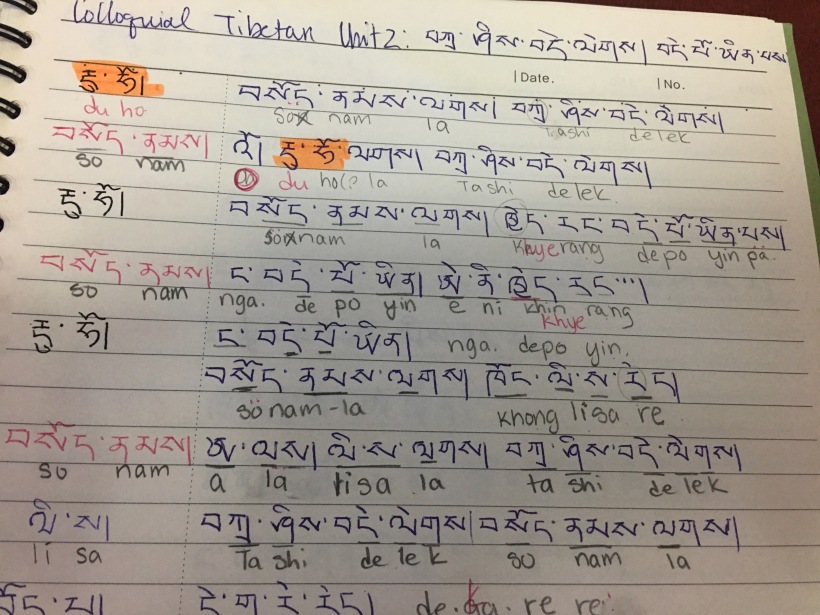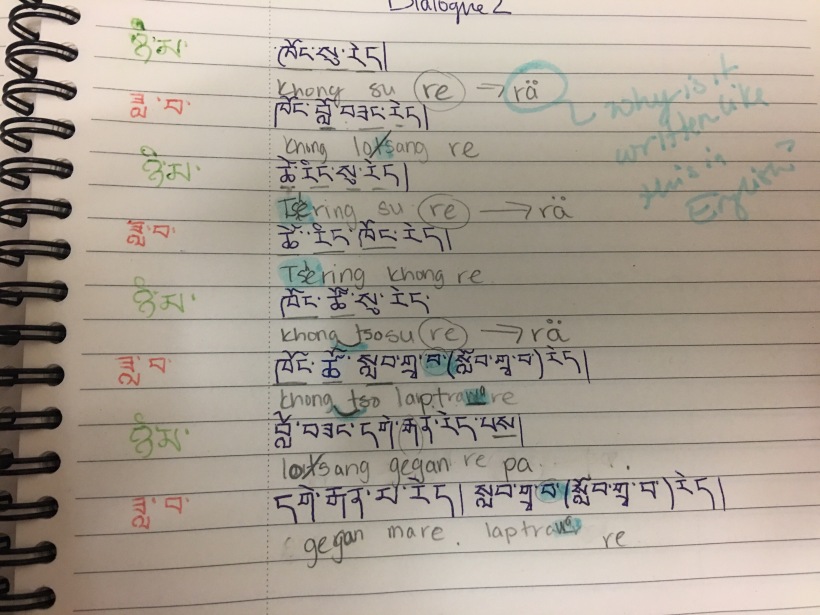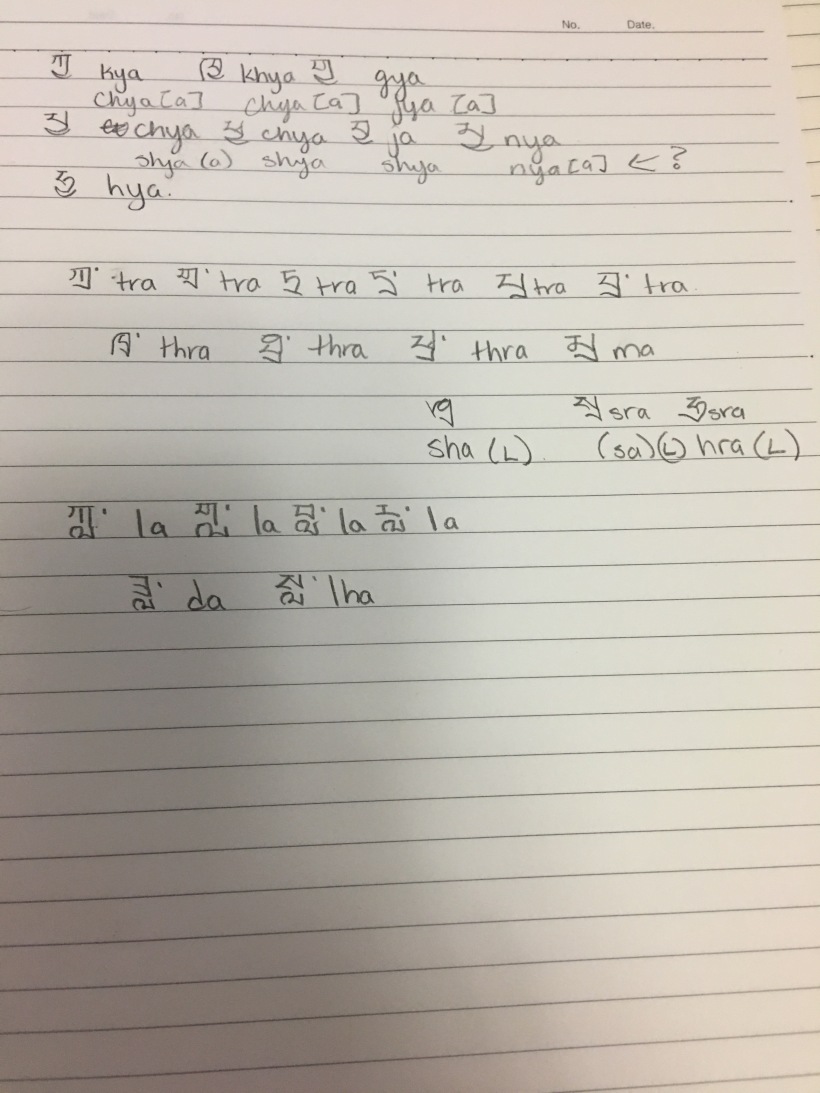
In September, I slacked a lot on my progress to learn Tibetan. This month I set out with a goal to be able to read somewhat. That means I don’t have to be perfect, but I should have an idea without feeling too overwhelmed. I haven’t studied the first chapter in my book thoroughly, because I was a bit lazy with it.
Had I studied the vocabulary , grammar notes, and explanations of pronunciation rules and the like I’m sure my reading would have gone much smoother than it has. The other day I decided for fun I would transcribe the mini dialogues form the first chapter of a few different books I have into a notebook. Then I’d wait a day or two and try to romanize them myself to see if I could figure out the pronunciation of some words. Not that I knew exactly what I was reading, but I had an idea since most books start with the same topics.

I then double checked with how the book transliterated things and I’m not sure I agree, but its my only reference point so I will go off of that for now. A few things I realized is I have an idea of what most basic consonant and vowel syllables should look like or might be transcribed as, though it may differ from book to book slightly. The one thing I haven’t done is actually practice reading the dialogues out loud and comparing it to the actual audio recordings for the textbook. I suppose that is something that I can work on slowly.

One thing I really hated about romanizing the transcript was the way some sounds are written. If I read the book, I would have realized that the syllable is pronounced differently if it is a question. But whether I read it or not it is referencing a type of vowel pronunciation found in French or German. I don’t know either of those languages so how the fuck does it help me to figure this out?! Part of me thinks I should just start watching some linguistic videos to get an idea, but a lot of times they don’t reference backwards in the sense that maybe there is a similar pronunciation in English. Normally those videos only show the phonetic pronunciation of the word in English, not of a foreign word with a similar vowel pronuncaition in English. I really shouldn’t be picky though as I know its just one of those things you listen to over and over and over. And then you practice it over and over, and eventually you may come close to how it is pronounced.

These are the last of the bunch that I need to remember the pronunciation for. Over the last week or two I’ve been a little lazy so I did not complete my mission of learning to read well this month, though I can read some things, not much. And if I can pinpoint what sound it might make I have no idea what it means. So I need to make a new goal for myself for November’s learning.
By the end of November, I’d like to be able to say Hello, My name is Nina. Nice to meet you. What is this? What is that? Oh, and while I’m at it and trying to make things difficult for myself, I’m going to try to teach myself the Standard Pronunciation and Amdo Pronunciation. Because why should I make anything easy on myself?